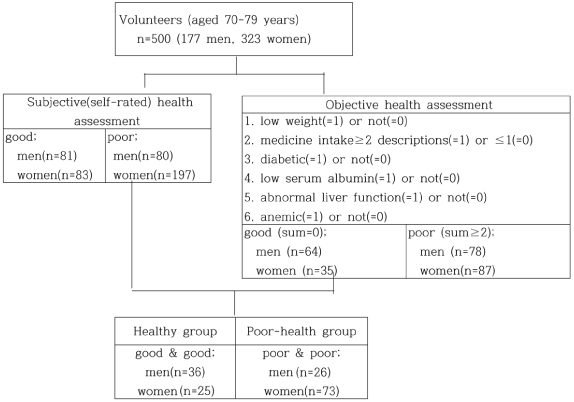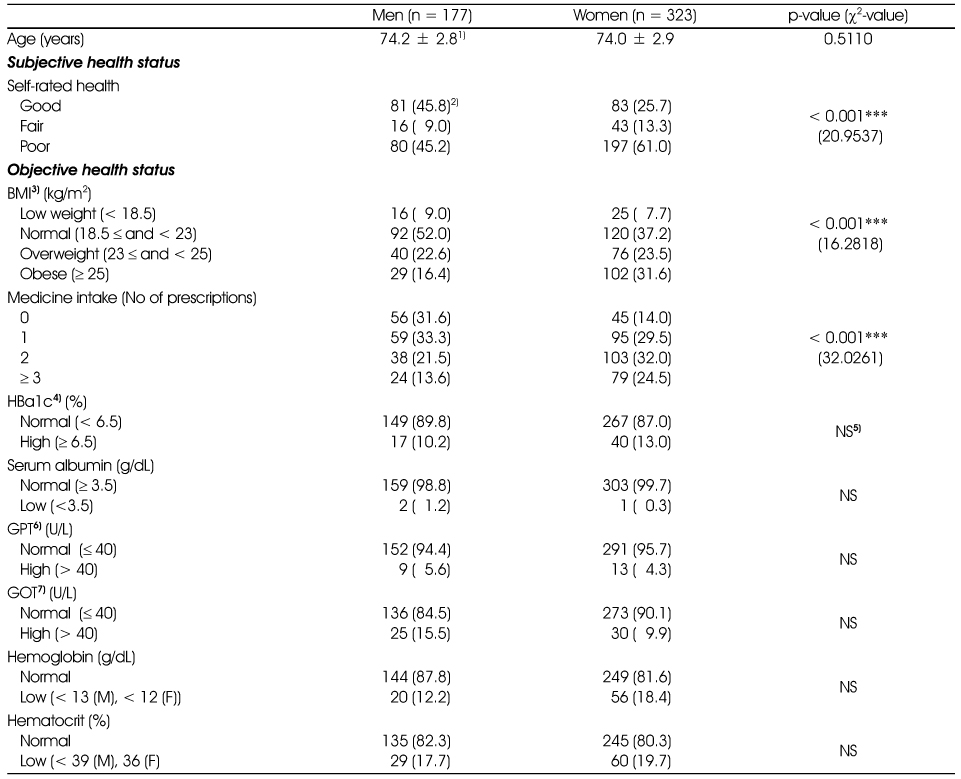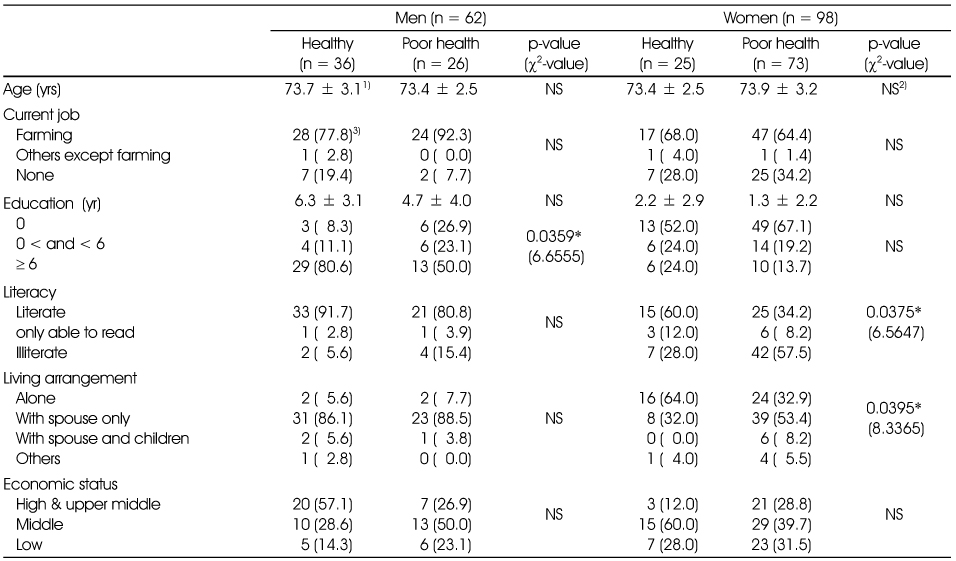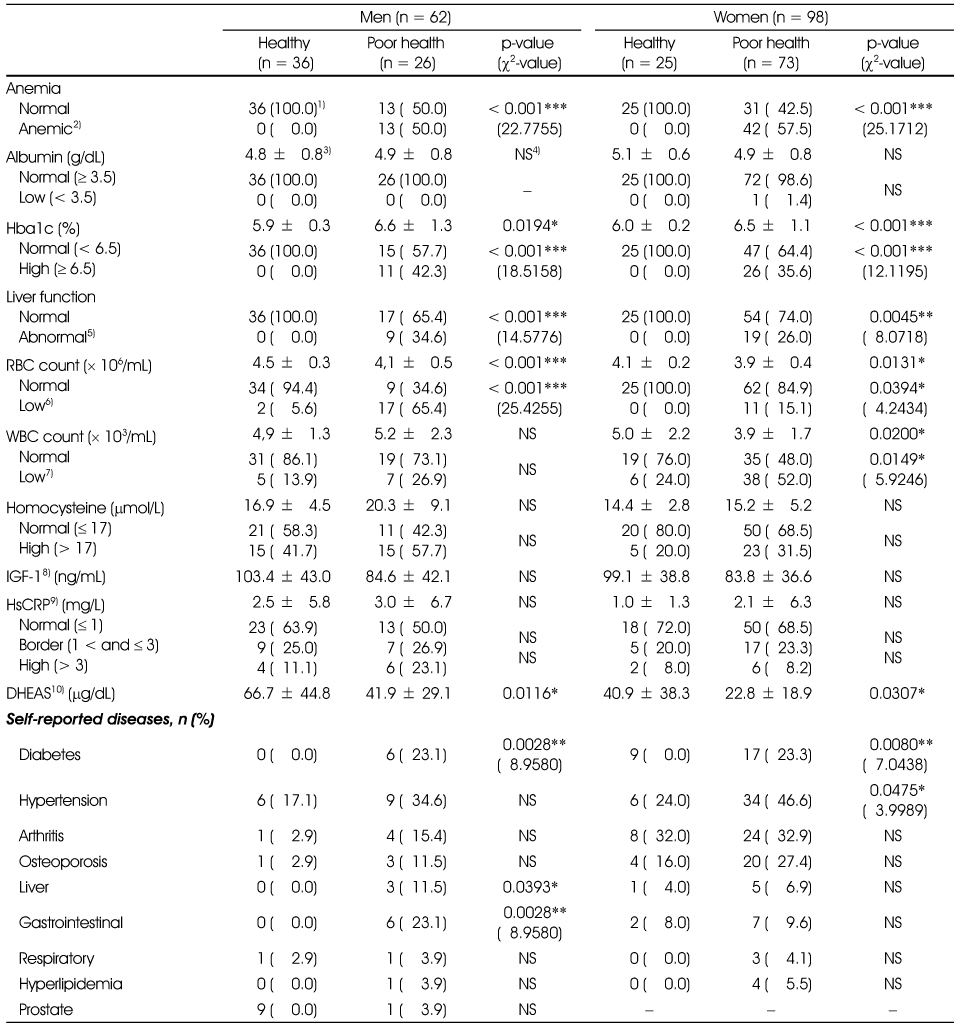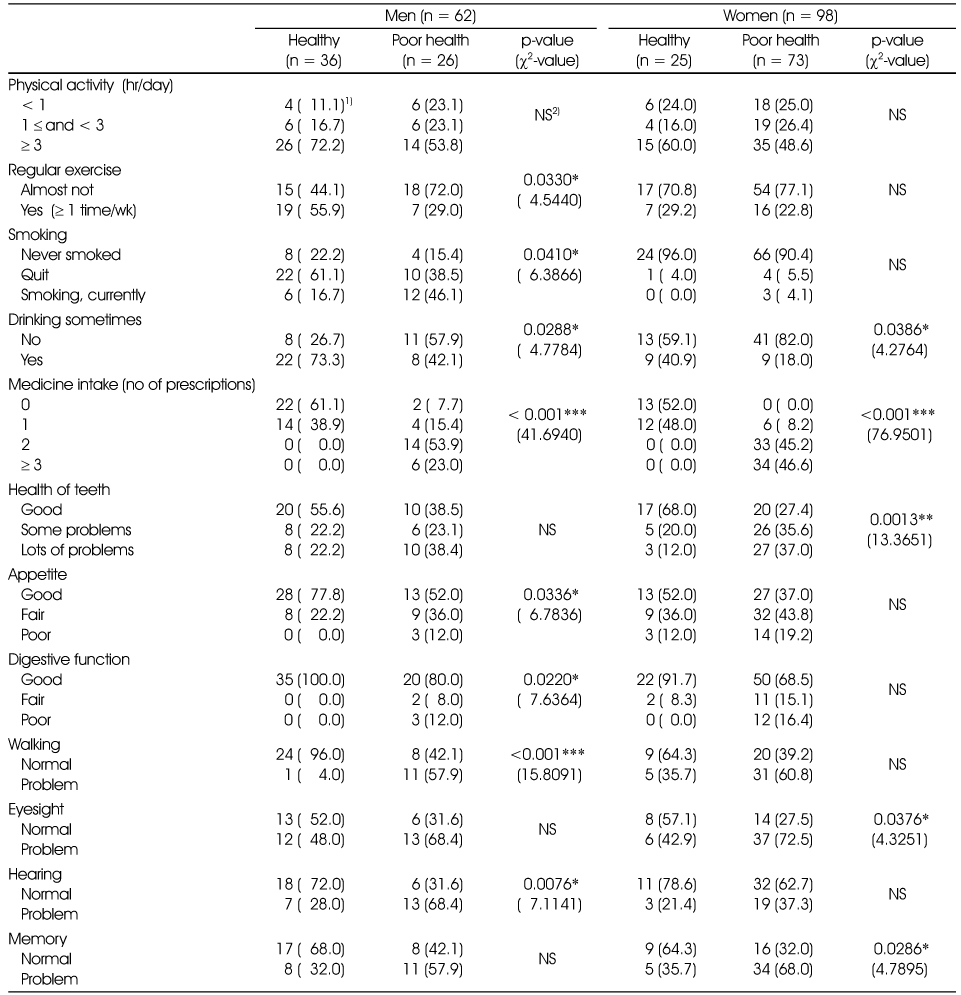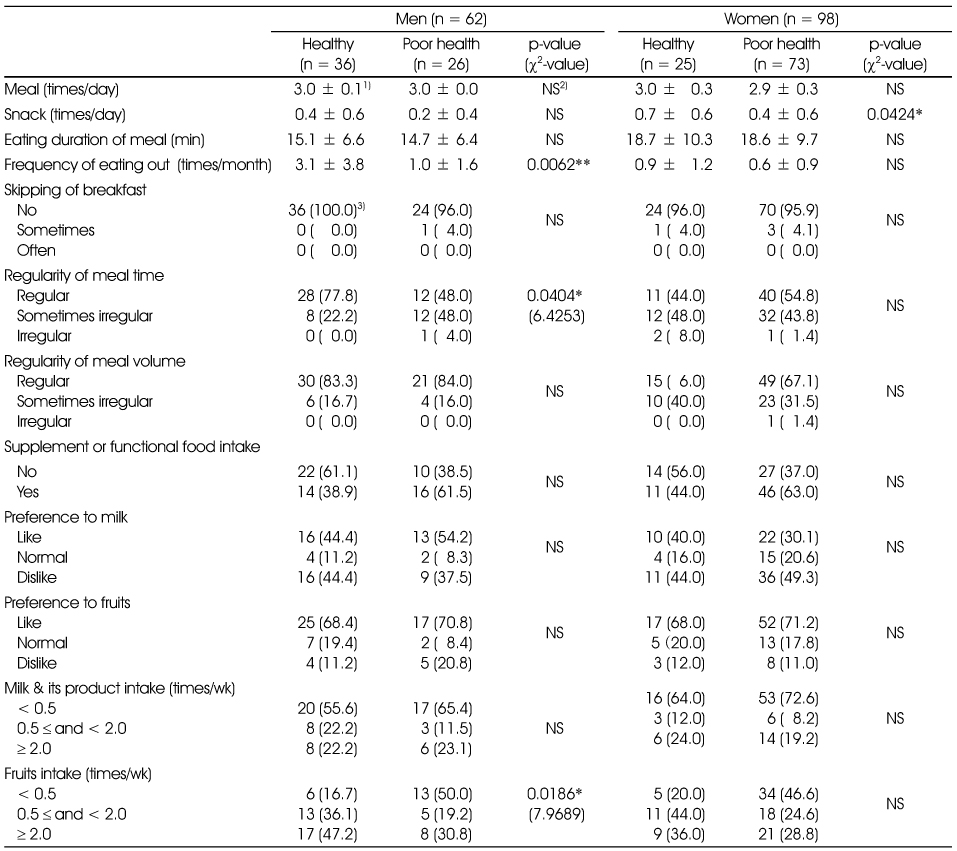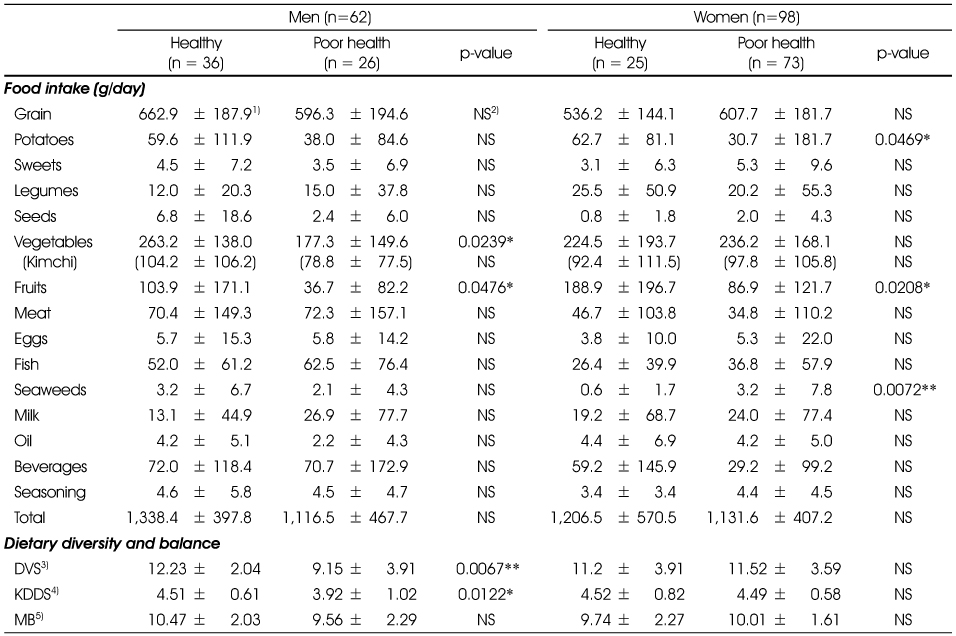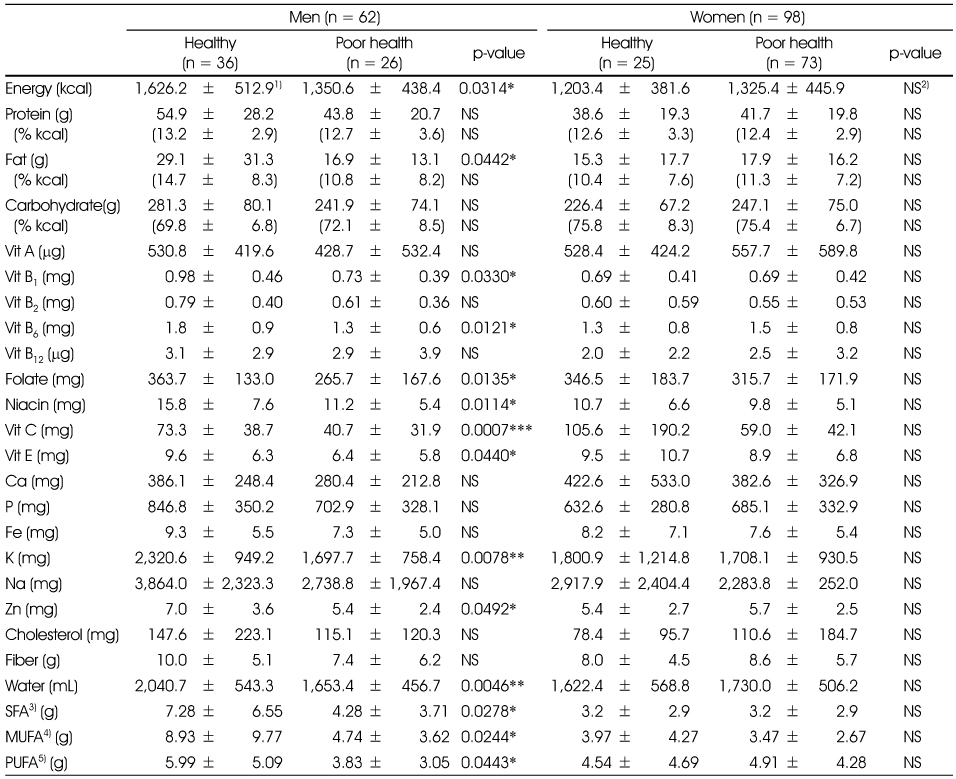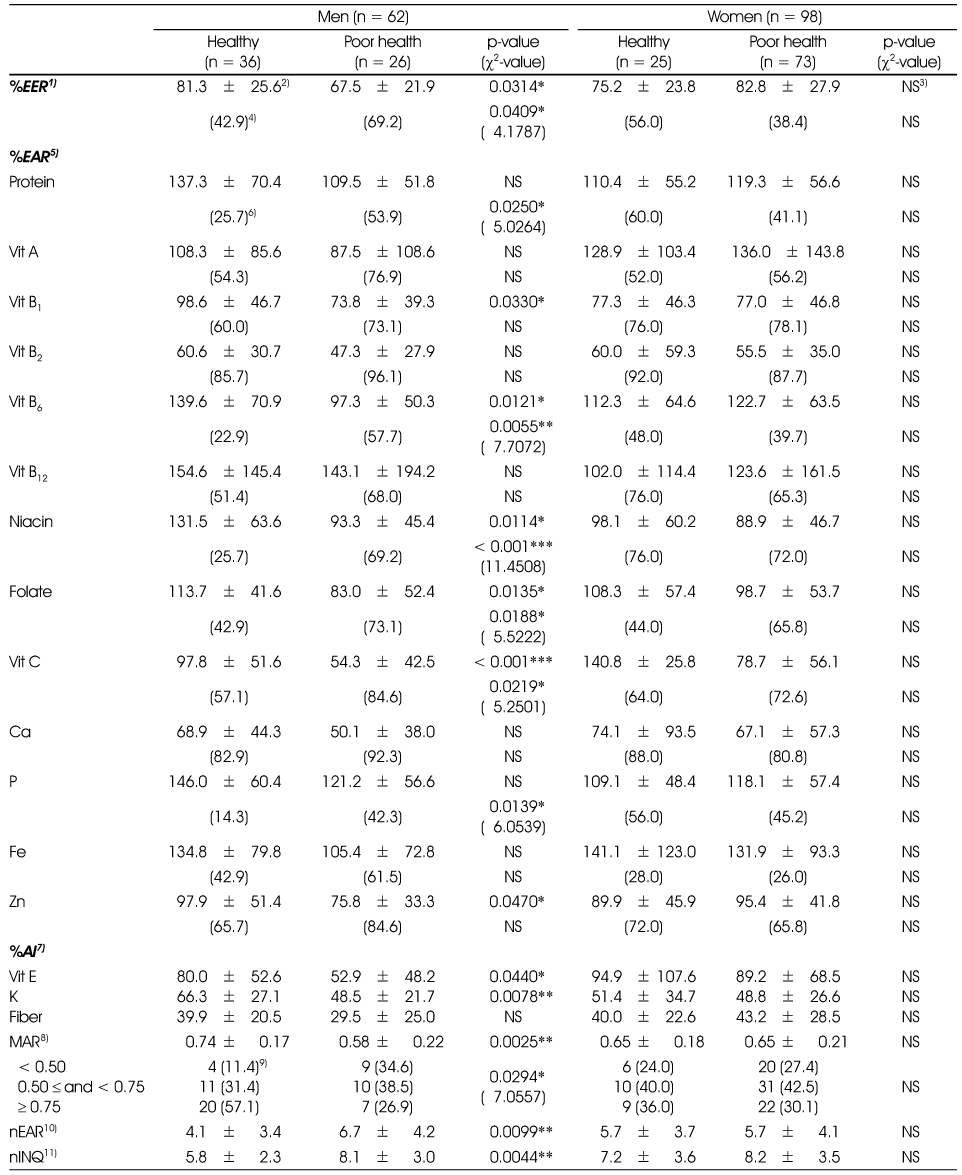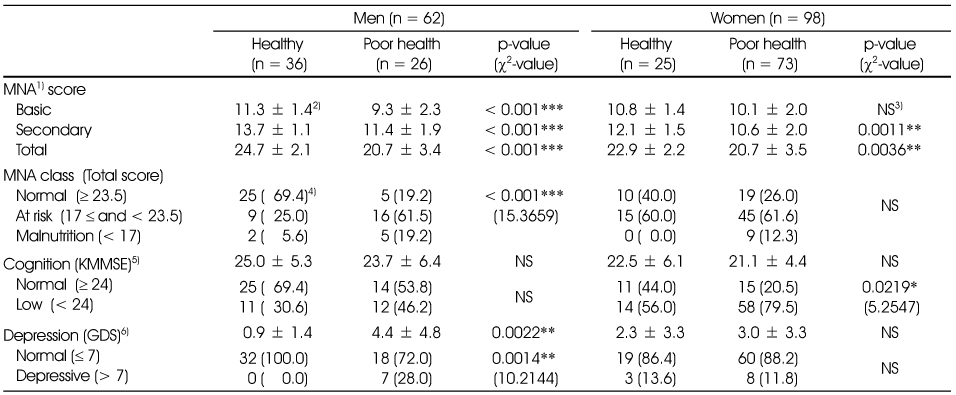References
1. Ahmadi SM, Mohammadi MR, Mostafavi SA, Keshavarzi S, Kooshesh SM, Joulaei H, Sarikhani Y, Peimani P, Heydari ST, Lankarani KB. Dependence of the geriatric depression on nutritional status and anthropometric indices in elderly population. Iran J Psychiatry 2013;8(2):92–96.
2. American Diabetes Association. Diagnosis and classification of diabetes mellitus. Diabetes care 2010;33:S62–S69.
3. Bang SM, Lee JO, Kim YJ, Lee KW, Lim S, Kim JH, Park YJ, Chin HJ, Kim KW, Jang HC, Lee JS. Anemia and activities of daily living in the Korean urban elderly population: Results from the Korean longitudinal study on health and aging (KLoSHA). Ann Hematol 2013;92:59–65.
4. Berliner N. Anemia in the elderly. Trans Am Clin Climatol Assoc 2013;124:230–237.
5. Bollwein J, Volkert D, Diekmann R, Kaiser MJ, Uter W, Vidal K, Sieber CC, Bauer JM. Nutritional status according to the mini nutritional assessment(MNA) and frailty in community dwelling older persons: a close relationship. J Nutr Health Aging 2013;17(4):351–356.
6. Bourne PA. Self-rated health of the educated and uneducated classes in Jamaica. N Am J Med Sci 2010;2(1):27–35.
7. Campion EW, deLabry LO, Glynn RJ. The effect of age on serum albumin in healthy males: report from the Normotive Aging Study. J Gerontol 1988;43(1):M18–M20.
8. Choe JS, Kwon SO, Paik HY. Nutritional status and related factors of the elderly in longevity areas. III. Relation among self-rated health, health-related behaviors, and nutrient intake in rural elderly. Korean J Nutr 2006;39(3):286–298.
9. Chun H, Khang YH, Kim IH, Cho SI. Explaining gender differences in ill-health in South Korea: the roles of socio-structural, phycosocial, and behavioral factors. Soc Sci Med 2008;67(6):988–1001.
10. Cooper JK, Gardner C. Effect of aging on serum albumin. J Am Geriatr Soc 1989;37(11):1039–1042.
11. Dean M, Raats MM, Grunert KG, Lumbers M. Factors influencing eating a varied diet in old age. Public Health Nutr 2009;12(12):2421–2427.
12. Guthrie HA, Scheer JC. Validity of a dietary score for assessing nutrient adequacy. J Am Diet Assoc 1981;78:240–245.
13. Hamer M, Lavoie KL, Bacon SL. Taking up physical activity in later life and healthy ageing: the English longitudinal study of aging. Br J Sports Med 2013;48(3):239–243.
14. Hansen RG, Wyse BW. Expression of nutrient allowances per 1,000 kcal. J Am Diet Assoc 1980;76(3):223–227.
15. Hardy R, Cooper R, Aihie Sayer A, Ben-Shlomo Y, Cooper C, Deary IJ, Demakakos P, Gallacher J, Martin RM, McNeill G, Starr JM, Steptoe A, Syddall H, Kuh D. HALCyon study team. Body mass index, muscle strength and physical performance in older adults from eight cohort studies: The HALCyon programme. PLoS One 2013;8(2):e56483.
16. Haveman-Nies A, Groot LPGM, Cruz JAA, Osler M, van Staveren WA. Dietary quality and lifestyle factors in relation to 10-year mortality in older Europeans. The SENECA study. Am J Epidemiol 2002;156:962–968.
17. Herrmann M, Widmann T, Colaianni G, Colucci S, Zallone A, Herrmann W. Increased osteoclast activity in the presence of increased homocysteine concentration. Clin Chem 2005;51(12):2348–2353.
18. Hooshmand B, Solomon A, Kreholt I, Rusanen M, Hnninen T, Leivisk J, Winblad B, Laatikainen T, Soininen H, Kivipelto M. Associations between serum homocysteine, holotranscobalamin, folate and cognition in the elderly: a longitudinal study. J Intern Med 2012;271:204–212.
19. Houston DK, Johnson MA, Nozza RJ, Gunter EW, Shea KJ, Cutler GM. Age-related hearing loss, vitamin B12 and folate in elderly women. Am J Clin Nutr 1999;69:564–571.
20. Idler EL, Kasl SV. Self-rating of health: do they also predict change in functional ability? J Gerontol B Psychol Sci Soc Sci 1995;50(6):s344–s353.
21. Iizaka S, Tadaka E, Sanada H. Comprehensive assessment of nutritional status and associated factors in the healthy, community-dwelling elderly. Geriatr Gerontol Int 2008;8:24–31.
22. Kang Y, Kim MY, Eliza L. The relationship of perceived health status, activities of daily living and nutrition status in the community-dwelling Korean elderly. J Korean Acad Nurs 2008;38(1):122–130.
23. Kasayama S, Morita S, Otsuki M, Asanuma N, Saito H, Mukai M, Koga M. Independent association between insulin-like growth factor-1 and dehydroepiandrosterone sulphate in women in middle adulthood. Clin Endocrinol (Oxf) 2007;66:797–802.
24. Kato K, Zweig R, Schchter C, Verghese J, Barzilai N, Atzmon G. Personality, self-rated health and cognition in centenarians : Do personality and self-rated health relate to cognitive function in advanced age? Aging (Albany NY) 2013;5(3):183–191.
25. Kilpatrick ES, Bloomgarden Z, Zimmet P. Is hemoglobin A1c a step forward for diagnosis diabetes? BMJ 2009;339:b4432.
26. Kitamura K, Nakamura K, Kobayashi R, Oshiki R, Saito T, Oyama M, Takahashi S, Nishiwaki T, Iwasaki M, Yoshihara A. Physical activity and 5-year changes in physical performance tests and bone mineral density in postmenopausal women: The Yokogoshi study. Maturitas 2011;70:80–84.
27. Korea National Statistics Office. 2013 Statistics on aged population 2013. cited December 10, 2013. Available from
http://kostat.go.kr.
28. Korean Geriatric Society. Tools for the assessment of cognitive function for elderly. Korean-MMSE 2009. cited January 4, 2009. Available from
http://www.geriatrics.or.kr.
29. Korean Nutrition Society. Dietary reference intakes for Koreans Seoul: Kookjin publishing; 2010.
30. Korean Society for the Study of Obesity. Diagnosis and therapy of obesity: Asia-Pacific area guideline Seoul: 2000.
31. Krebs-Smith SM, Wright HS, Guthrie HA, Krebs-Smith J. The effects of variety in food choices on dietary quality. J Am Diet Assoc 1987;87(7):897–903.
32. Kuo HK, Sorond FA, Chen JH, Hashmi A, Milberg WP, Lipsitz LA. The role of homocysteine in multisystem age-related problems: a systematic review. J Gerontol A Biol Sci Med Sci 2005;60:1190–1201.
33. Kwon J, Suzuki T, Kumagai S, Shinkai S, Yukawa H. Risk factors for dietary variety decline among Japanese elderly in a rural community: a 8-year follow-up study from TMIG-LISA. Eur J Clin Nutr 2006;60(3):305–311.
34. Kwon J, Suzuki T, Yoshida H, Kim H, Yoshida Y, Iwasa M, Furuna T. Association between change in bone mineral density and decline in usual walking speed in elderly community-dwelling Japanese women during 2 years of follow-up. J Am Geriatr Soc 2007;55(2):240–244.
35. Lee IM, Shiroma EJ, Lobelo F, Puska P, Blair SN, Katzmarzyk PT. Lancet Physical Activity Series Working Group. Effect of physical inactivity on major non-communicable diseases worldwide: an analysis of burden of disease and life expectancy. Lancet 2012;380:219–229.
36. Lee KS, Cheong HW, Kim EA, Kim KR, Oh BH, Hong CH. Nutritional risk and cognitive impairment in the elderly. Arch Gerontol Geriatr 2009;48:95–99.
37. Lee YH, Choi KS, Kang IO. Determinants of self-rated health among the Korean elderly living in the community. J Korea Gerontol Soc 1998;18(2):110–124.
38. Lengyel CO, Tate PB, Obirek BLatz AK. The relationships between food group consumption, self-rated health, and life satisfaction of community-dwelling canadian older men: the manitoba follow-up study. J Nutr Elder 2009;28(2):158–173.
39. Meng S, Ciment S, Jan M, Tran T, Pham H, Cueto R, Yang XF, Wang H. Homocysteine induces inflammatory transcriptional signaling in monocytes. Front Biosci (Landmark Ed) 2013;18:685–695.
40. Meng X, D'Arcy C. Successful aging in Canada:Prevalence and predictors from a population-based sample of older adults. Gerontology 2014;60:65–72.
41. Montlahuc C, Soumare A, Dufouil C, Berr C, Dartigues JF, Poncet M, Tzourio C, Alperovotch A. A self-rated health and risk of incident dementia: A community-based elderly cohort, the 3C study. Neurology 2011;77:1457–1464.
42. Park SC. Korean centenarians Seoul: Seoul National University Publishing; 2002.
43. Ravaglia G, Forti P, Maioli F, Martelli M, Servadei L, Brunetti N, Porcellini E, Licastro F. Homocysteine and folate as risk factors for dementia and Alzheimer disease. Am J Clin Nutr 2005;82:636–643.
44. Rowe JW, Kahn RL. Successful aging. Gerontologist 1997;37:433–440.
45. Sakamoto W, Isomura H, Fujie K, Deyama Y, Kato A, Nishihira J, Izumi H. Homocysteine attenuates the expression of osteocalcin but enhances osteopontin in MC3T3-E1 preosteoblastic cells. Biochim Biophys Acta 2005;1740:12–16.
46. Sieber CC. Nutritional screening tools - How dose the MNA compare? Proceeding of the session held in Chicago May 2-3, 2006 (15 Years of Mini Nutritional Assessment). J Nutr Health Aging 2006;10(6):488–492.
47. Sheikh JI, Yesavage JA. Geriatric depression scale(GDS), recent evidence and development of a shorter version. Clin Gerontology 1986;5:165–172.
48. Sorenson AW, Wyse BW, Wittwer AJ, Hansen RG. An index of nutritional quality for a balanced diet. New help for an old problem. J Am Diet Assoc 1976;68(3):236–242.
49. Stevens PJ, Syddall HE, Patal HP, Martin HJ, Cooper C, Aihie Sayer A. Is grip strength a good marker of physical performance among community-dwelling older people? J Nutr Health Aging 2012;16(9):769–774.
50. Tsai AC, Kai MY. Mini nutritional assessment and short-form mini nutritional assessment can predict the future risk of falling in older adults-Results of a national cohort study. Clin Nutr 2013;doi:
10.1016/j.clnu.2013.10.010. [Epub ahead of print].
51. Vuorisalmi M, Lintonen T, Jylha M. Comparative vs global self-rated health: associations with age and functional ability. Aging Clin Exp Res 2006;18(3):211–217.
52. Weisen SF, Frishman WH, Aronson MK, Wassertheil-Smoller S. Self-rated health assessment and development of both cardiovascular and dementing illness in an ambulatory elderly population: A report from the Bronx Longitudinal aging study. Heart Dis 1999;1(4):201–205.
53. Yatabe MS, Taguchi F, Ishida I, Sato A, Kameda T, Ueno S, Takano K, Watanabe T, Sanada H, Yatabe J. Mini nutritional assessment as a useful method of predicting the development of pressure ulcers in elderly patients. J Am Geriatr Soc 2013;61(10):1698–1704.
